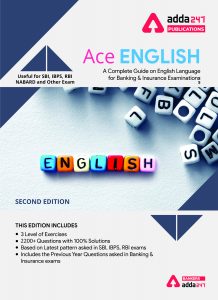Directions (1-7): Read the following passage and answer the following questions. Some words are highlighted to help you answer some of the questions.
In the near future, space debris will become a critical challenge for the global community, endangering access to space and the benefits this access brings. In recent years, the $360 billion global space economy has experienced a transformation. Declining costs, satellite and launcher size evolutions and the proliferation of related technology has led to a surge in satellite launches, many of which are conducted by new space enterprises and nations. Over the coming years, thousands of payloads are expected to be launched by the commercial sector alone, adding to the over 2,000 already active satellites in orbit. This transformation and rapid growth are anticipated to increase the space sector’s vital role in telecommunications, remote sensing, space science and national security, making it a vital node of the Fourth Industrial Revolution’s infrastructure.
However, the rush in space activity is already adding to a crowded orbit. With over 20,000 pieces of debris larger than 10 centimetres tracked in orbit and many more untracked, the rise in space activity will lead to even more debris, increasing collision risk. The orbital environment is a globally shared resource where existing international guidelines steer space actors in their activities, however, these are not enforceable and derived standards are not always followed. Neither are guidelines expected to sufficiently curtail the creation of new debris in the coming years caused by fundamental shifts in traffic. Therefore, an opportunity exists to develop a solution based on a multi stakeholder approach built on public-private collaboration.
As the challenge of orbital debris or “space junk” is set to grow, current and future missions face an increasing risk of possible collisions. The Space Sustainability Rating (SSR) will provide a new, innovative way of addressing the orbital challenge by encouraging responsible behaviour in space through increasing the transparency of organizations’ debris mitigation efforts. The SSR will provide a score representing a mission’s sustainability as it relates to debris mitigation and alignment with international guidelines. Organizations will provide mission data through a questionnaire, which will be evaluated in combination with other external data through a mathematical model that establishes a rating for the mission. By voluntarily taking part in the rating, spacecraft operators, launch service providers and satellite manufacturers will share a single point of reference externally describing their mission’s level of sustainability. Making their aggregate score publicly available, these actors will increase transparency and place emphasis on their debris mitigation approach, without disclosing any mission-sensitive or proprietary information. The rating may also act as a differentiator and trigger positive outcomes (e.g. impacting insurance cost or funding conditions), incentivizing other stakeholders to improve their behavior.
Q1. What has led to a surge in Satellite launch in these days?
(a) Reduced operational costs, satellite and launcher size evolutions and the rapid increase of related technology.
(b) Space launch market competition is the manifestation of market forces in the launch service provider business.
(c) The current trends in launch traffic are focusing on describing the characteristics of small satellites.
(d) Due to the excess supply compared to demand, it led to a surge in Satellite launch.
(e) None of these.
Q2. What are the benefits of the rapid growth in satellite launching?
(a) The new smaller type satellites are able to do close observation giving the credible information.
(b) Its revolution in the area of overall allied sectors related to transportation.
(c) It augments its role in areas like telecommunications, remote sensing, space science and national security.
(d) These technologies are alike in the rapid and widespread manner in which they are transforming or promise to transform economic sectors.
(e) None of these.
Q3. What is the threat mentioned in the passage author talks about in the orbit?
(a) Hundreds of thousands of man-made objects are zipping around our planet—from dead satellites to errant nuts and bolts making it a huge Junk.
(b) The increase in the number of debris can led to a further change in the atmosphere in the space.
(c) The increase in debris can have an increased chance of collision in the orbit.
(d) Both (B) & (C)
(e) None of these.
Q4. According to the passage what is the need of Space Sustainability Rating?
(a) Identifying areas of concern and providing an innovative way for the long-term sustainability of outer space activities through its debris reduction efforts.
(b) Assessing how patterns of water and energy may be affected by climate change.
(c) Minimizing the impact of the risk events—occurrences that have a negative impact on the project.
(d) It helps to invent new things better from the “Space Junk” in the space.
(e) None of these.
Q5.Which of the following sentence is incorrect as given in the passage?
(a) Space debris will become a critical challenge in the future.
(b) There are 2,000 active satellites in orbit.
(c) The SSR provides a score representing a mission’s sustainability as it relates to debris mitigation and alignment with international guidelines.
(d) As the challenge of orbital debris or “space junk” is set to grow, current and future missions is free from those risks by the introduction of new ‘space risk reduction’ tool.
(e) None of these.
Q6. Choose the word which is most nearly the SIMILAR in meaning to the word ‘PROLIFERATION’ printed in bold as used in the passage.
(a)Pleasant
(b)Agreeable
(c)Pacifying
(d)Augment
(e)Irritating
Q7. Choose the word which is most nearly the OPPOSITE in meaning to the word ‘COLLABORATIVELY’ printed in bold as used in the passage.
(a)Separately
(b)Worldly
(c)Cultured
(d)Provincial
(e)Suave
Directions (8-15): Read the following passage and answer the following questions based on the given passage.
The humble onion almost halted the onward march of the Reserve Bank of India (RBI) in its endeavour to bring down financial costs in the economy. Almost, because the RBI, despite finding its hands tied by rising inflation thanks to onion prices, found other means to drive down interest rates in the market, and in the system, in its monetary policy announcement on Thursday. At the press conference after the announcement, Governor Shaktikanta Das declared, only half in jest, that the proceedings of the Monetary Policy Committee, which decided to hold rates, had already been discounted by the market. “But don’t discount the RBI,” he warned, pointing out that the central bank had at its disposal various instruments. True to the statement, the RBI unleashed several measures that had an electric effect on the markets, driving down bond yields by 10-20 basis points in a matter of a minute. The exemption to banks from providing for cash reserve ratio on fresh retail loans disbursed after January 31 to purchase automobiles and residential houses, and to MSMEs, will help banks shave off a part of their costs. The hope is that they will pass on at least a part of that saving to borrowers as lower rates. Second, the introduction of one- and three-year term repos at policy rate of 5.15% for a total of ₹1 lakh crore is also aimed at prodding rates downward as banks now pay 6%-6.5% on deposits. Third, the RBI has fine-tuned its liquidity management process in a manner designed to help banks manage their interest costs better.
Whether banks really do what the RBI has signaled to them — transmit lower rates to borrowers — depends on various factors, not the least of which is demand for credit. The RBI’s statement that it would maintain an accommodative stance “as long as necessary to revive growth” clearly signals its commitment to growth. By explicitly saying that there is “policy space available for future action”, the RBI has signalled that there could be at least one more cut in the months ahead in this rate-easing cycle. The decision to extend the one-time restructuring of MSME loans, linking pricing of loans to medium enterprises to an external benchmark, and the nod for permitting extension of date of commencement of commercial operations for loans to commercial real estate are all welcome measures that raise questions of excessive forbearance but will certainly help the industry. The inflation projection — 6.5% in the current quarter and 5.4%-5.0% in the first half of 2020-21 — reflects the current realities. The projected GDP growth of 6% for 2020-21 appears achievable, assuming that the nascent signs of recovery sustain. The RBI has gone on the front foot to boost growth in this policy after the conservative Budget presented last week. It is to be hoped that these steps will change the sentiment in the economy.
Q8. What are the various ways RBI opted which have an immediate effect on the market?
(a) Exempting banks from providing for cash reserve ratio on fresh retail loans to purchase automobiles and residential houses, and to MSMEs
(b) Introduction of one- and three-year term repos at policy rate of 5.15% for a total of ₹1 lakh crore.
(c) Tightening the liquidity management process of the banks.
(d) Only (A) & (B)
(e) All (A), (B) & (C)
Q9. What is the core intent in exempting the banks from providing for cash reserve ratio to MSME?
(a) Lenders have started considering restructuring loans to stressed small businesses.
(b) It will avoid bankruptcy and the lenders typically receive more than what they would through a bankruptcy proceeding.
(c) It will help banks to shave off a part of their costs.
(d) It will reduce bank debt levels by converting debt into equity eventually will increase confidence in the financial system.
(e) None of these.
Q10. What is the need of introducing one- and three-year term repos at 5.15%?
(a) The one –and three repos was introduced in lieu with the global compliance with the policy rates.
(b) The Bond market immediately reversed its bearish trend after the introduction of Repo rate.
(c) Banks have to provide higher interest now on deposits.
(d) It will target the medium term inflation at 4% levels.
(e) None of these.
Q11. Which of the following measures mentioned in the passage that will eventually help the industry?
(a) Extending the one-time restructuring of MSME loans
(b) Bond yields climbed, which allows banks to charge higher interest rates on mortgages and other loans.
(c) Linking pricing of loans to medium enterprises to an external benchmark.
(d) Permitting extension of date of commencement of commercial operations for loans to commercial real estate.
(e) Only (A), (C) & (D)
Q12. What could be the appropriate title for the above mentioned passage?
(a) Govt overdraft from RBI hints at worries on finances
(b) The RBI’s efforts to boost growth could change the sentiment in the economy.
(c) Federal Reserve Holds Benchmark Rate Steady
(d) RBI Plans to set up Alternative Retail Payments System
(e) None of these.
Q13. Choose the word/group of words which is most SIMILAR in meaning to the word/group of words printed in bold as used in passage.
Endeavour
(a) Entertainment
(b) Inactivity
(c) Attempt
(d) Obligation
(e) None of these.
Q14. Choose the word/group of words which is most SIMILAR in meaning to the word/group of words printed in bold as used in passage.
Accommodative
(a) Exemption
(b) Presence
(c) Slowdown
(d) Distribution
(e) Reconciling
Q15. Choose the word/group of words which is most SIMILAR in meaning to the word/group of words printed in bold as used in passage.
Benchmark
(a) Standard
(b) Unusual
(c) Service
(d) vociferous
(e) propitious
Solutions
S1. Ans. (a)
Sol. Referring to the lines of the first passage, it is pretty clear that option (a) holds true. This can be inferred from the lines, ‘Declining costs, satellite and launcher size evolutions and the rapid increase of related technology has led to a surge in satellite launches, many of which are conducted by new space enterprises and nations.’ This makes our correct answer choice option (a).
S2. Ans. (c)
Sol. Referring to the lines of the passage, it is clear that option (c) holds true. This can be inferred from the following lines, “This transformation and rapid growth are anticipated to increase the space sector’s vital role in telecommunications, remote sensing, space science and national security, making it a vital node of the Fourth Industrial Revolution’s infrastructure.”
S3. Ans. (c)
Sol. Referring to the lines of the passage, it is clear that option (c) holds true. This can be inferred from the following lines,“With over 20,000 pieces of debris larger than 10 centimetres tracked in orbit and many more untracked, the rise in space activity will lead to even more debris, increasing collision risk.”
S4. Ans. (a)
Sol. Referring to the lines of the passage, it is clear that only option that holds true is option (a).This can be inferred from the lines of the passage,
“As the challenge of orbital debris or “space junk” is set to grow, current and future missions face an increasing risk of possible collisions. The Space Sustainability Rating (SSR) will provide a new, innovative way of addressing the orbital challenge by encouraging responsible behaviour in space through increasing the transparency of organizations’ debris mitigation efforts.”
S5. Ans. (d)
Sol. Referring to the whole passage, it is clear that only option (d) is not in line with the passage as there is nothing mentioned about tool named ‘space risk reduction’ .Other than all the sentences are mentioned in the passage.
S6. Ans. (d)
Sol. Option (d) is the correct answer choice.
Proliferation means -rapid increase in the number or amount of something which is same as ‘augment’.
S7. Ans. (a)
Sol. Option (a) is the correct answer choice.
Collaboratively means -in a way that is produced by or involves two or more parties working together which is opposite of the word ‘separate.’
Provincial- of or concerning a province of a country or empire.
Suave means -charming, confident, and elegant. Option (a) is the correct answer choice as it is the most opposite in meaning to the given word.
S8. Ans. (e)
Sol. Referring to the lines of the first paragraph, it is clear that all the options holds true. This makes our correct answer choice option (e) our answer. This can be inferred from the lines of the passage. “The exemption to banks from providing for cash reserve ratio on fresh retail loans disbursed after January 31 to purchase automobiles and residential houses, and to MSMEs, will help banks shave off a part of their costs. The hope is that they will pass on at least a part of that saving to borrowers as lower rates. Second, the introduction of one- and three-year term repos at policy rate of 5.15% for a total of ₹1 lakh crore is also aimed at prodding rates downward as banks now pay 6%-6.5% on deposits. Third, the RBI has fine-tuned its liquidity management process in a manner designed to help banks manage their interest costs better”.
S9. Ans. (c)
Sol. Referring to the lines of the first paragraph, ‘The exemption to banks from providing for cash reserve ratio on fresh retail loans disbursed after January 31 to purchase automobiles and residential houses, and to MSMEs, will help banks shave off a part of their costs. The hope is that they will pass on at least a part of that saving to borrowers as lower rates.’ This makes our correct answer choice option (c) our answer.
S10. Ans. (c)
Sol. Referring to the lines of the first paragraph, Second, the introduction of one- and three-year term repos at policy rate of 5.15% for a total of ₹1 lakh crore is also aimed at prodding rates downward as banks now pay 6%-6.5% on deposits. This makes our correct answer choice option (c) our answer.
S11. Ans. (e)
Sol. Referring to the lines of the first paragraph, “The decision to extend the one-time restructuring of MSME loans, linking pricing of loans to medium enterprises to an external benchmark, and the nod for permitting extension of date of commencement of commercial operations for loans to commercial real estate are all welcome measures that raise questions of excessive forbearance but will certainly help the industry”. This will make our correct answer choice option (e).
S12. Ans. (b)
Sol. While going through the passages, it is clear that the only viable option that fits the passage would be option (b).
S13. Ans. (c)
Sol. The correct option is option (c).
Endeavour means try hard to do or achieve something.
This is similar to that of ‘Attempt’.
Obligation means – the condition of being morally or legally bound to do something.
S14. Ans. (e)
Sol. The correct option is option (e).
The word Accommodative means tending to reconcile or accommodate; bringing into harmony.
This is similar to that of ‘reconciling’.
S15. Ans. (a)
Sol. The correct option is option (a).
The word Benchmark means a standard by which something can be measured or judged.
This is similar to that of ‘Standard’.
Vociferously means – conspicuously and offensively loud; given to vehement outcry.
Propitious means -presenting favorable circumstances; likely to result in or show signs of success.





 English Language Quiz For Bank Foundatio...
English Language Quiz For Bank Foundatio...
 English Language Quiz For Bank Mains Exa...
English Language Quiz For Bank Mains Exa...


